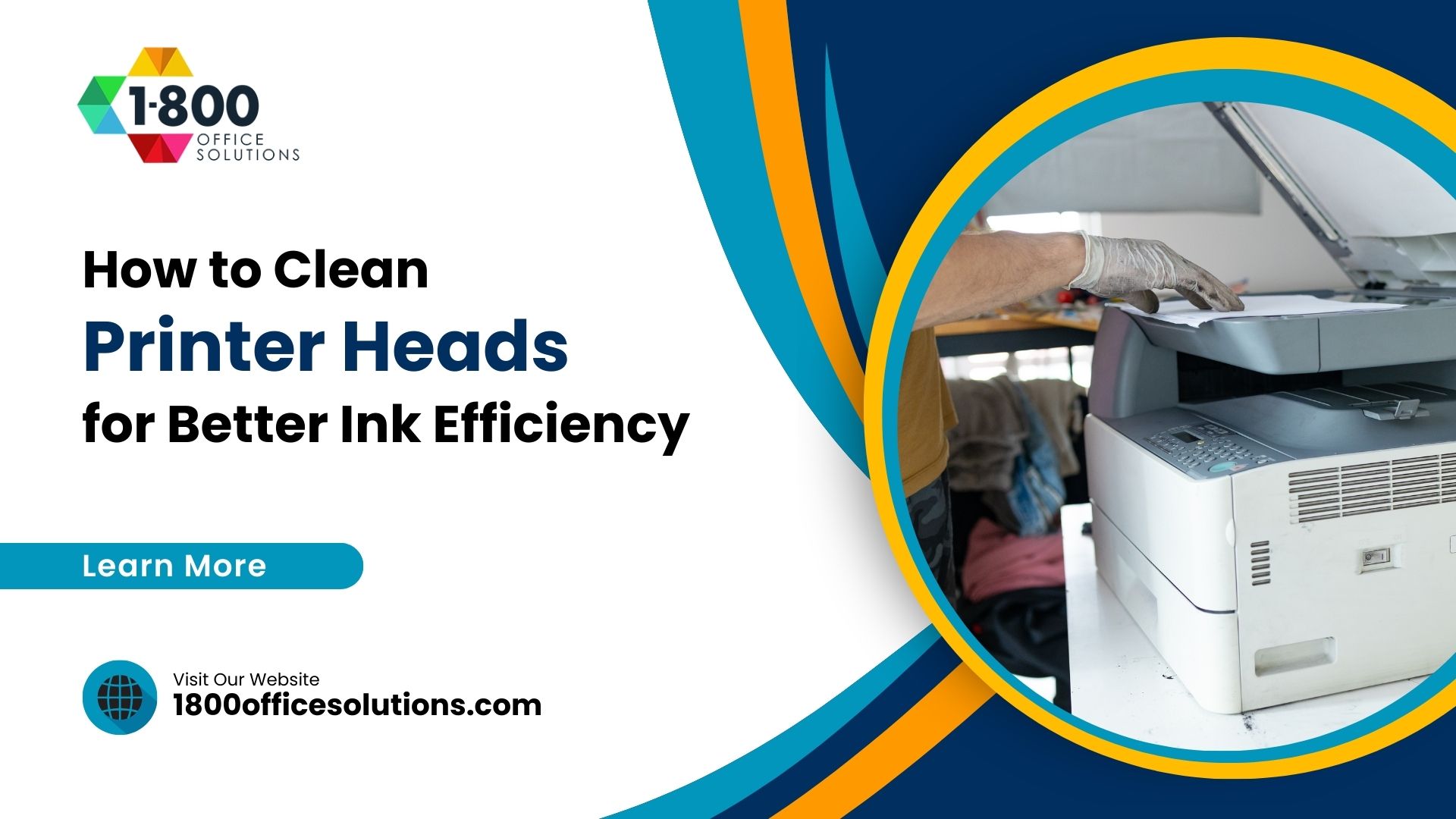Why Disable Banner Pages Can Boost Your Printing Efficiency
Disable Banner Pages
In today’s fast-paced work environment, the efficiency of every task, including printing, plays a pivotal role in overall productivity. One aspect of printing that often goes unnoticed but can significantly impact efficiency is the use of banner pages. These seemingly innocuous sheets of paper can either streamline the printing process or become a source of unnecessary wastage, depending on how they’re used.
The importance of printing efficiency cannot be overstated. In large offices where multiple users send print jobs to a single printer, managing and identifying each print job becomes crucial. This is where the concept of banner pages comes into play. But what exactly is a banner page, and how does it affect printing efficiency? Call Us Now!
What is a Banner Page?
A banner page, often simply referred to as a banner, is the first sheet printed in a print job. Its primary purpose is to act as a separator between different print jobs, ensuring that documents from different users don’t get mixed up.
- Definition: A banner page typically contains information about the user who sent the print job, the name of the document, the IP address of the computer from which the job was sent, and sometimes even the date and time of printing.
- Purpose: The main use of a banner page is to identify the originator of the print job. In environments where multiple users share a single printer, this identification helps in differentiating between print jobs.
Benefits of Using Banner Pages
In the modern office environment, where efficiency and organization are paramount, the use of banner pages in printing can offer a range of benefits. These advantages, while sometimes overlooked, can significantly streamline the printing process, ensuring smooth operations and minimizing potential mix-ups.
Differentiation
In bustling office spaces, where the hum of printers is a constant, it’s not uncommon for multiple print jobs to be sent to a single device simultaneously. Here, banner pages play a pivotal role. They serve as clear demarcations between different print jobs, ensuring that each set of documents is easily distinguishable from the next. This differentiation is vital, especially in large organizations, as it ensures that each user can swiftly locate and retrieve their respective documents without sifting through a pile of mixed-up papers.
Identification
Beyond mere differentiation, the banner page serves a more intricate function – it acts as a unique identifier. By displaying specific details such as the user’s name, IP address, and sometimes even the title of the document, it provides a snapshot of the print job’s origin. This becomes especially invaluable in shared printing environments where multiple users might send print jobs to the same device. With a banner page, there’s no second-guessing who printed what.
Comprehensive Details
The information a banner page carries isn’t just limited to the basics. A well-configured banner page can offer a wealth of details:
- The exact date and time the document was printed, providing a timestamp for reference.
- The name of the individual who initiated the print, ensuring accountability.
- The IP address of the originating computer, which can be crucial for IT departments tracking print tasks.
- In certain configurations, even the title of the document is displayed, offering an immediate overview of the print job’s content.
Such granularity in details can be a boon, especially when trying to track or audit print jobs in a busy organization.
While the concept of a banner page might seem simple, its benefits are manifold. It’s not just about separating print jobs; it’s about organization, efficiency, and accountability.
Disabled Banner Page Increase Printing Efficiency
Disabling banner pages can significantly increase printing efficiency in various ways. Here’s a breakdown of how this simple action can lead to a more streamlined and efficient printing process:
- Faster Print Jobs: Each banner page adds an additional sheet to the print job. By disabling it, you reduce the total number of pages being printed, which means the printer can complete the job faster.
- Reduced Paper Usage: Over time, the number of banner pages can add up, especially in busy office environments. By eliminating them, you can save a substantial amount of paper, which not only reduces costs but also supports eco-friendly initiatives.
- Less Printer Wear and Tear: Printers, like all machines, have a lifespan that’s affected by their usage. By reducing the number of pages they print (by eliminating banner pages), you can potentially extend the life of your printer.
- Elimination of Print Job Confusion: While banner pages are designed to differentiate between print jobs, they can sometimes lead to confusion, especially if they get separated from their respective documents. Without them, users might find it easier to simply look at the first page of a document to identify it.
- Reduced Toner or Ink Usage: Every page printed uses toner (for laser printers) or ink (for inkjet printers). By eliminating unnecessary banner pages, you can save on these consumables, leading to further cost savings.
- Streamlined Document Collection: Without the additional banner page, employees can retrieve their print jobs more swiftly from the printer, reducing the time spent at the machine and increasing overall productivity.
- Less Waste Management: Fewer pages mean less waste. Offices would spend less time and resources on disposing of or recycling the additional banner pages.
- Optimized Printer Memory: Some printers store print job details in their memory. By reducing the number of pages in each job, you can ensure that the printer processes tasks more efficiently, especially when handling multiple jobs simultaneously.
- Cost Efficiency: Beyond the tangible savings on paper and ink, there’s also the cost associated with storage (for extra paper), disposal (for wasted banner pages), and even the time employees spend sorting through print jobs.
- Environmental Impact: In the bigger picture, reducing paper usage by eliminating banner pages contributes to environmental conservation efforts. Fewer trees are cut down for paper production, and less energy is used in the paper manufacturing process.
Banner pages might have their advantages in certain scenarios, disabling them can lead to a host of benefits that enhance printing efficiency, reduce costs, and support sustainability efforts.
The Case Against Banner Pages
While banner pages offer several benefits, there are arguments against their use:
- Unnecessary in Small Settings: In environments where only a few people use the same printer, or where each user has a dedicated printer, banner pages might be superfluous.
- Environmental and Cost Benefits: Disabling banner pages can lead to significant paper savings. Over time, this can translate to both environmental benefits and cost savings for the organization.
- Paper Wastage: Each banner page used is an additional sheet of paper. In large organizations, where hundreds of print jobs are sent daily, this can lead to considerable paper wastage. By choosing to disable the banner page, organizations can reduce this wastage.
While banner pages have their advantages, it’s essential to assess the specific needs of an organization or setting before deciding to enable or disable them. Making an informed choice can lead to improved printing efficiency and reduced costs.
How to Enable and Disable Banner Pages
Navigating the world of printing can sometimes be a daunting task, especially when it comes to tweaking settings to optimize efficiency. One such setting is the choice to enable or disable the banner page. Here’s a step-by-step guide on how to toggle banner pages:
- Machine: Most modern printers come with an access panel or a digital interface. Navigate to the printing preferences or settings section. Look for an option labeled “Banner Page” or “Separator Page” and choose to enable or disable as per your requirement.
- Embedded Web Server: Some printers, especially those in a networked environment, can be accessed via a browser. Enter the printer’s IP address to access the embedded web server. Once logged in (you might need administrator rights), navigate to the printing settings and toggle the banner page option.
- Driver: On your computer, go to the control panel and select ‘Devices and Printers’. Right-click on your printer and select ‘Printer Preferences’. Under the advanced settings or Xerox CentreWare, you should find the option to turn off banner pages.
Different printer models and drivers might have slightly varied procedures. Always refer to the system administration guide or documentation home for model-specific instructions.
Real-world Scenarios
In a bustling corporate office, where the Xerox device is continuously churning out documents, banner pages can be a savior, ensuring every print job is easily identifiable. However, in a small startup with just a handful of employees, these pages might just be an unnecessary addition, leading to paper wastage.
Consider a scenario where confidential documents are being printed. Having a banner page can ensure that sensitive information doesn’t land in the wrong hands. On the flip side, in an eco-friendly organization, the aim might be to reduce paper usage, making the choice to disable banner pages a no-brainer.
What People Also Ask
Why are banner pages used?
Banner pages are primarily used to separate and identify print jobs, especially in environments where multiple users send jobs to a single printer. They ensure that each user can easily locate and retrieve their documents.
How can I disable banner pages on my printer?
To disable banner pages, you can access the printer settings either directly on the machine, through its embedded web server using a browser, or via the printer driver on your computer. The exact steps might vary based on the printer model.
Does disabling banner pages affect the quality of the print job?
No, disabling banner pages does not impact the quality of the print job. It merely removes the additional page that identifies the print job’s details.
Are there any risks associated with disabling banner pages?
The primary risk is the potential mix-up of print jobs in a shared environment. Without banner pages, users might pick up documents not meant for them, leading to privacy concerns.
Conclusion
In printing, the seemingly minor decision to enable or disable the banner page carries more weight than one might initially believe. This choice can profoundly influence factors such as operational efficiency, the conservation of resources, and the safeguarding of private information. While it might appear as a mere setting adjustment, its ripple effects can be felt throughout an organization, regardless of its size.
For large corporations, where hundreds or even thousands of documents are printed daily, the role of banner pages in streamlining the process and preventing mix-ups is undeniable. Conversely, in smaller startups or home offices, where printing volume is limited, the continuous use of banner pages might lead to unnecessary paper consumption, negating eco-friendly efforts.
It’s paramount for every organization, individual, or entity to introspectively assess their unique needs and operational dynamics. Only through such introspection can one truly discern the necessity or redundancy of banner pages in their specific context. Understanding and appreciating the nuanced role of banner pages is the first step in this journey.
In conclusion, as we navigate the evolving landscape of technology and sustainability, making informed choices about seemingly small matters like banner pages becomes crucial. After all, each piece of paper conserved not only contributes to organizational efficiency but also paves the way for a greener, more sustainable tomorrow.












